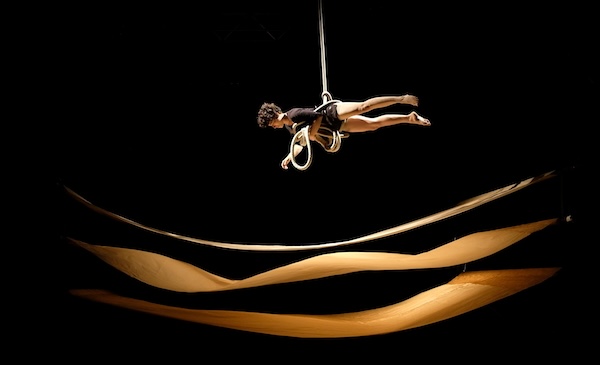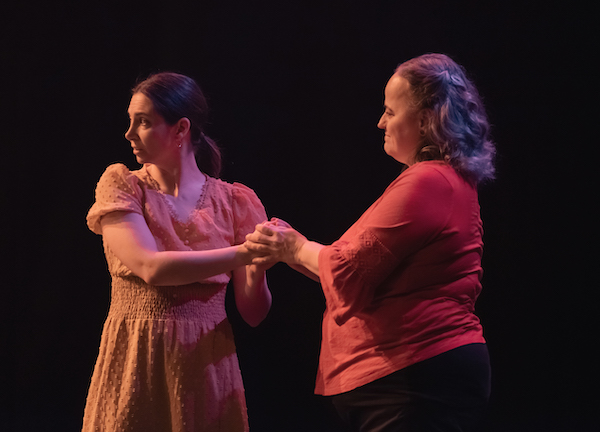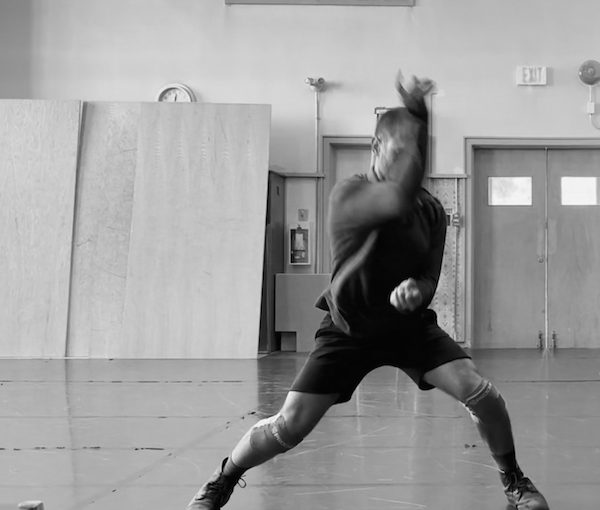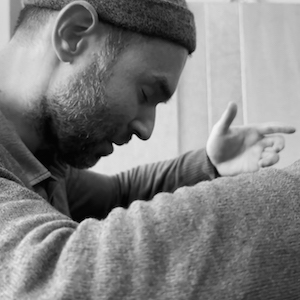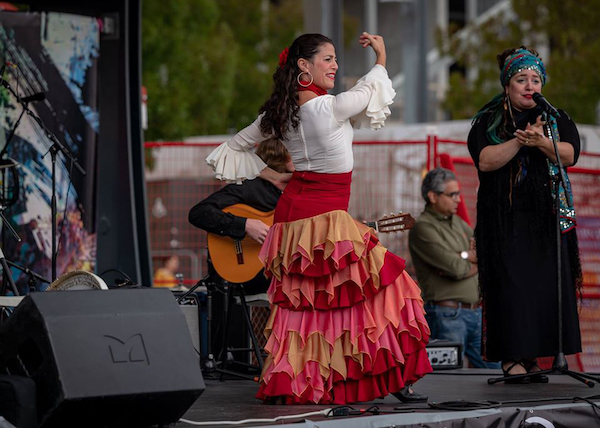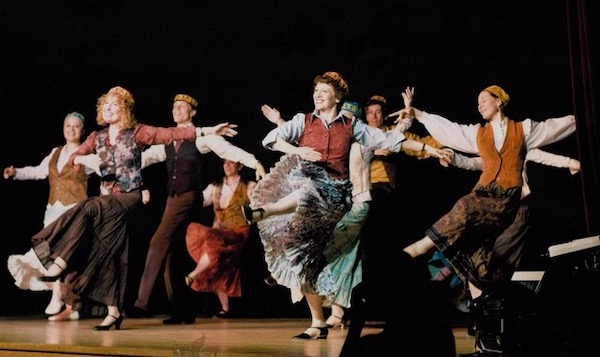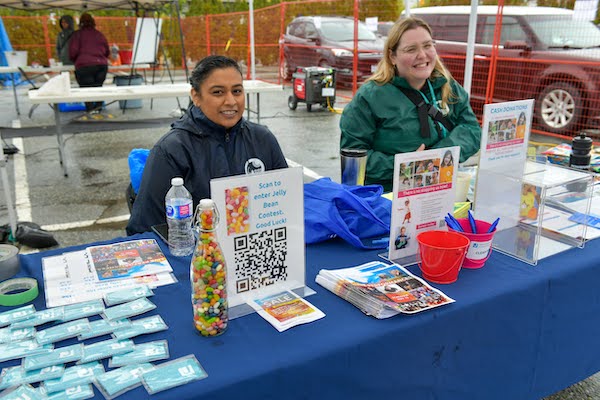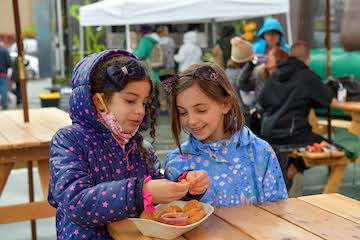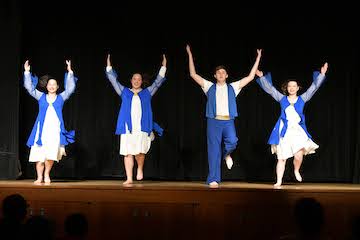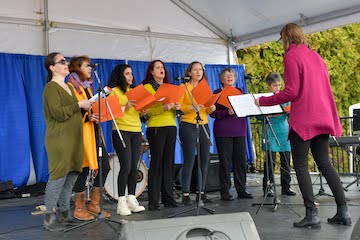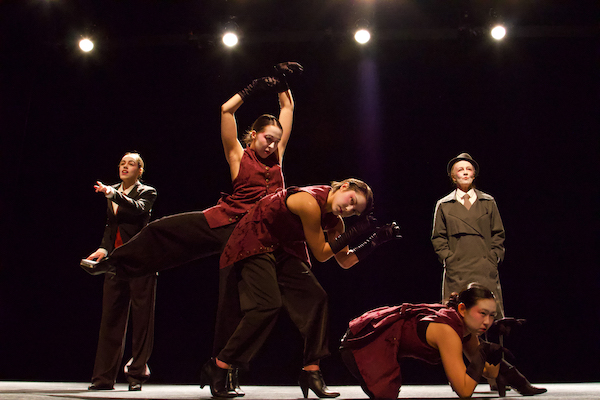School of Rock cast members, left to right: Crosby Mark, Casey Trotter, Colin Sheen, Mya Forrest, Fumi Okochi and Thailey Roberge. Matthew Rossoff is choreographer of the production. (photo by Emily Cooper)
Matthew Rossoff has returned to Theatre Under the Stars – to choreograph his first production for TUTS, School of Rock. The musical, which alternates with Cats at the Malkin Bowl in Stanley Park, previews July 7-8 and opens July 11.
“Over a year ago, I responded to a posting seeking new creative team members to join the upcoming season and thought it would be a great way to reconnect with the TUTS community,” said Rossoff, who grew up in Richmond and performed in TUTS shows in his younger days. “I was actually on my honeymoon when I received the initial call and am thrilled it all worked out!”
Rossoff, who is a member of the Jewish community, has performed in two TUTS productions: South Pacific in 2000 and Joseph and the Amazing Technicolour Dreamcoat in 2002.
“For several reasons, both of these productions and experiences were huge influences in my career as an emerging artist,” Rossoff told the Independent. “After a long performing hiatus, South Pacific was my first musical after I graduated high school and it was a dream to perform at the Malkin Bowl. Joseph was directed and choreographed by my childhood idol, Jeff Hyslop, and this production catapulted me into my professional career as a dancer and actor, making my CAEA [Canadian Actors’ Equity Association] debut in Fiddler on the Roof at the Vancouver Playhouse later that fall.”
While earning his bachelor of arts at the University of British Columbia, majoring in theatre and minoring in English literature, Rossoff was also doing work in film and traveling across Canada performing in theatrical productions. In 2006, he followed through on his dream to move to New York. There, he performed in several shows, and made his Stratford Shakespeare Festival debut in Camelot and Jesus Christ Superstar.
“Jesus Christ Superstar gained critical acclaim and, eventually, the entire Canadian cast transferred to Broadway in March 2012,” Rossoff said. “I was fortunate to make my Broadway debut, as the dance captain and swing. Our production became a Tony Award nominee for best revival, which offered me a once-in-a-lifetime opportunity to perform on the Tony Awards!”
And to think, Rossoff’s career began in elementary school, when he saw one of his sister’s dance classes. “I was amazed,” he said, knowing it “was something I needed to do. Very much in line with the character Mike from A Chorus Line, I told my parents, ‘I can do that!’
“Tap dancing evoked a passion and spark in my soul so bright that I continued on with it all throughout elementary school,” Rossoff said. “During high school, I decided to put up my dancing shoes for a bit and tried other sports and school activities, but it was after my first show at TUTS, South Pacific in 2000, when I bought a new pair of shoes and reignited my passion for tap dancing. Luckily I did because my career took off and I’ve been so fulfilled and blessed with such amazing dance and performance opportunities.”
He got his first theatre work about the time he started tap dancing, in Grade 3. He played an orphan and one of Fagin’s boys, Mouse, in Oliver!
“My sister was in the production with me and I remember getting bit by the theatre bug,” said Rossoff. “There was a sense of community being created with the cast that I loved being a part of and, of course, the excitement of performing and dancing under the lights.”
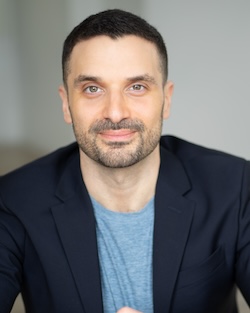
After 10 years living and working in New York City, Rossoff decided to follow another impulse – “to go back to school and deepen my training as a performer, artist and educator.”
He moved to Toronto to attend York University, earning a master’s of fine arts in the school’s performance (acting) program, with a specialization in teaching.
“Those two years changed me at the core of my artistry and revealed a new sense of how I wanted to move forward in my artistic journey,” he told the Independent. “Along with my long-time dance background, my focus became voice, speech and mindfulness work. I quickly became a faculty member at several post-secondary schools and universities in Toronto – teaching voice, speech and movement at York University, Randolph College, Sheridan College, Brock University and, most recently, Toronto Metropolitan University.
“Knowing that choreography and dance were at the base of my creative foundation, I stepped onto the creative team side of the table and began my director/choreographer journey. Shortly after my time at TUTS this summer, I will be returning to Toronto and stepping into the world of Disney as a resident creative team/dance supervisor for Disney Cruise Lines.”
Rossoff’s body presence, mindfulness and yoga work are at the core of his artistic practice and choreography.
“This work stemmed from my training and perhaps lack of intersection between dance and how to connect to the breath and emotional journey as an actor and storyteller,” he said. “Dance is an extraordinary universal language of embodiment, but in musical theatre you also have to put the text onto your full voice and hold space in the body to support and reveal the emotional, physical, intellectual and imaginative journey the character moves through.
“I’m always curious how can an actor lead from the internal impulses and connections to what’s happening in the scene and put it fully into their body through external gesture and movement. To play a truthful human experience, an actor must use the breath to spark the imagination, the senses and full range of expression with their whole sense of self.”
While Rossoff puts his whole self into his work, collaboration is the cornerstone of his creative process.
“Working alongside the director and honouring their vision and design of the show, a movement esthetic and point of view is cultivated,” he explained.
“In my own pre-production work, I start with the words off the page from the playwrights, composers and lyricists: the storytelling. I’m curious, What’s the primary narrative being told and how can movement from the actors elevate and further the storytelling in a compelling and exciting way?”
For productions such as School of Rock, Rossoff said, “I listen to the music over and over again and I daydream and imagine ways to bring this … story to life. Once the show is cast and we’re in the rehearsal hall, I come prepared with an overall structure of how the choreography will unfold or, if the story seeks personalized gestures or movement, bring in exercises to draw out embodied movement from the actors. For example, School of Rock has 13 incredible young performers and their energy brings out creative ideas, movements and impulses [and] I try to hold space for them to join in on the collaborative journey. They certainly inform and bring a unique point of view through their personalized storytelling.
“Choreographing a musical is not all about big production dance numbers,” he added, “but also about sorting out the transitions and the moments in between, as they become key to the flow and momentum of the story. As the show gets closer to opening night, it becomes about the details of precision, economy and relaxation in the movement so that each actor feels at ease and ready to perform with unconscious competence and joy!”
For tickets to School of Rock and Cats, which previews July 5-6 and opens July 10, visit tuts.ca. Cats runs to Aug. 21 and School of Rock to Aug. 22. For tickets, visit tuts.ca.



